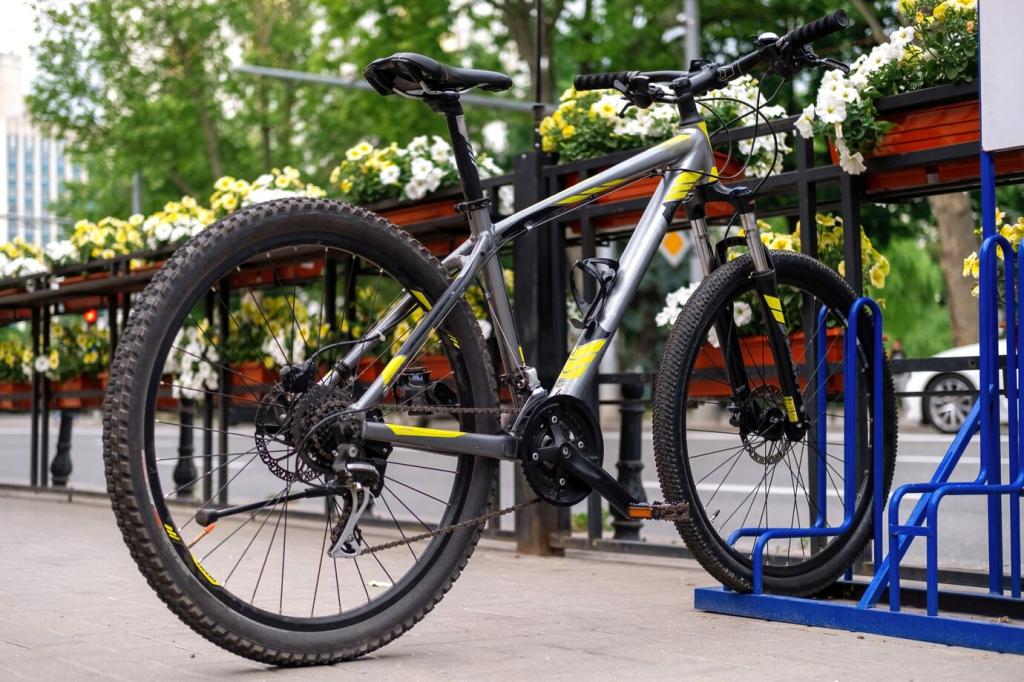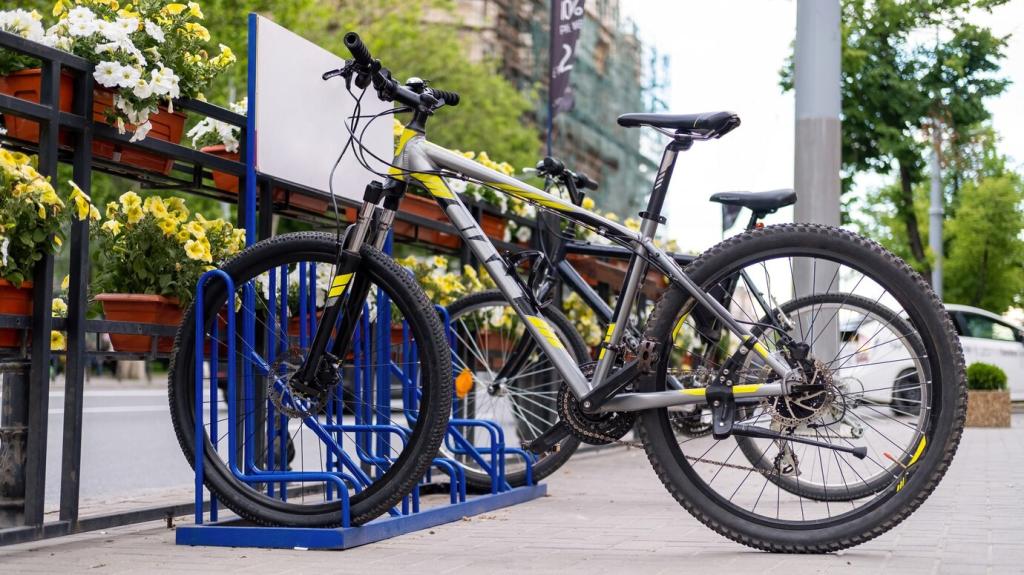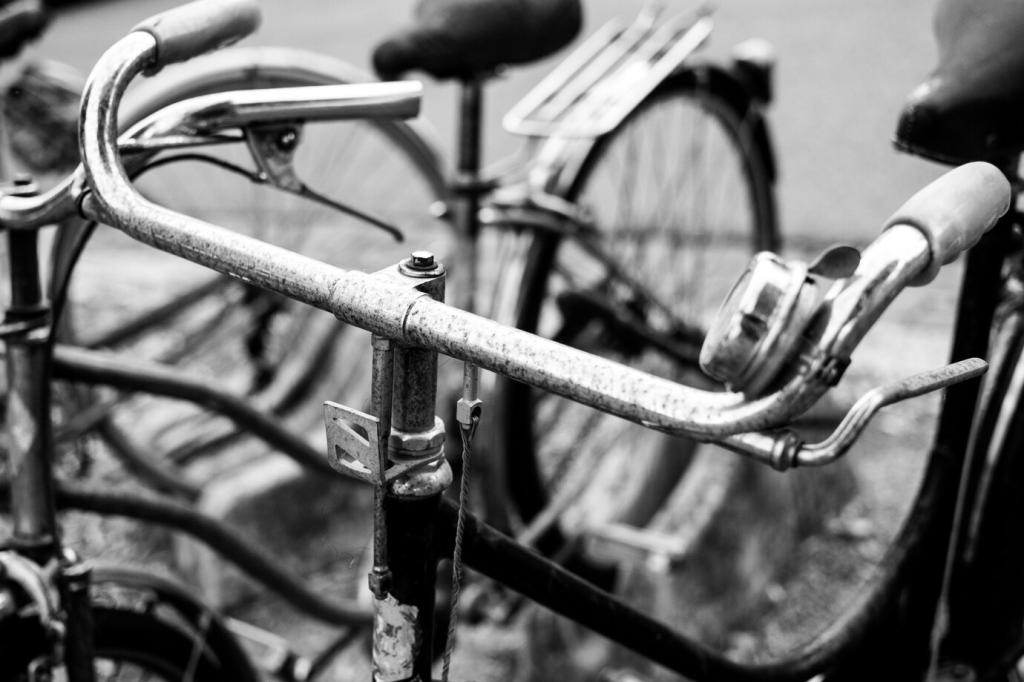
Gear Systems: Mountain Bikes vs Road Bikes
Today’s chosen theme is “Gear Systems: Mountain Bikes vs Road Bikes.” We’ll decode ratios, ranges, derailleurs, and cassette logic so you can climb smarter, descend smoother, and ride happier. Enjoy the ride, share your questions in the comments, and subscribe for future deep dives.
Gear Ratios and Range Demystified
Mechanical advantage explained
A 30T chainring paired with a 10–52T cassette gives mountain riders towering mechanical advantage on brutal gradients. Road setups like 50/34 with 11–30 balance climbing and cruising efficiency. Think leverage: smaller front, larger rear equals easier turning under load, particularly off-road.
Cadence, torque, and fatigue
Off-road, keeping cadence high in a forgiving gear limits wheel spin and saves legs on slippery roots. On tarmac, tighter jumps help maintain a preferred cadence zone for metabolic efficiency. Pick gears that protect your rhythm, and your rhythm will protect you.
From city bridges to alpine passes
A rider once swapped a road cassette before tackling a windy bridge commute and immediately smoothed out her spin. Later, on an alpine pass, the compact crank rescued her knees. Share your steepest climb and the gear that saved your day.
Mountain derailleurs use clutch mechanisms to stabilize the chain across bumps, reducing slap and drops on rocky descents. Pairing a clutch with a narrow-wide chainring amplifies retention. If you’ve battled chain drops on technical trails, a clutch is your quiet, reliable ally.

Cassettes and Chainrings: The Art of the Tooth
A 10–52T or 11–50T cassette transforms impossible pitches into manageable climbs, especially when momentum falters on rocks. The jump between large sprockets feels big, but the rescue gear keeps wheels turning. Off-road, survival gears often beat perfect cadence. Which bailout saves you most?
Cassettes and Chainrings: The Art of the Tooth
Road cassettes like 11–28 offer smaller jumps that keep your heart rate and cadence composed during surges. You’ll feel fewer awkward transitions when pace lines surge or gradients ripple. The result is smoother power and less fatigue. What’s your comfort cadence on long efforts?
Straighter chainlines and larger sprockets reduce articulation and friction. On road bikes, bigger chainrings at matched cadence can be slightly more efficient. Mountain drivetrains benefit from precise B-tension and quality pulleys. Small tweaks reclaim watts you’ll feel on long climbs and headwinds.
Efficiency and Losses: Where Watts Disappear
Off-road conditions pack drivetrains with abrasive grime, increasing wear and drag. Timely cleaning and fresh lube restore silence and efficiency. Road riders aren’t immune: salty spray and dust chew through chains too. Share your lube routine, and we’ll compare wet, dry, and hot-wax approaches.
Efficiency and Losses: Where Watts Disappear

Scenario Playbook: Choosing the Right Gearing
A 1x setup with a clutch derailleur and 10–52T cassette keeps momentum alive as the trail pitches unpredictably. Quick, clean shifts avoid wheel spin. Lower gears preserve traction and confidence. What’s your favorite climb-clearing combo on soaked, rooty switchbacks?
Scenario Playbook: Choosing the Right Gearing
A compact road crank with a mid-range cassette lets you spin comfortably for an hour-long ascent, then hold speed across rippling terrain. Tight steps stop cadence lurches during tempo changes. Tell us which ratio helped you crest your longest climb without cracking.

Your compatibility checklist
Confirm freehub standard, derailleur capacity, chain type, chainline, crank spindle, and bottom bracket interface. Road frames may limit largest sprocket size; mountain frames may need specific hanger standards. Drop your frame and wheel details below, and we’ll help map a safe upgrade path.

Budget versus performance surprises
Sometimes the best upgrade is a fresh chain and cassette, not a new groupset. Well-tuned mechanical systems can rival pricy electronic setups. Consider tools and maintenance time, too. Comment your budget, and we’ll propose a stepwise plan that builds performance without regret.

Future-proofing your ride
Standards evolve fast: UDH hangers, wider chainlines, 12-speed ecosystems, and power meter compatibility matter. Think about terrain trends and fitness goals. Choose gear systems that scale as you explore gravel, marathons, or crits. Subscribe to catch our compatibility guide before your next purchase.

Indexing and B-tension made simple
Set limit screws to protect spokes and frames, then fine-tune cable tension for quiet, exact shifts. On wide-range mountain cassettes, B-tension clearance is critical to avoid chatter. Road riders benefit from micro-adjust to keep sprints snappy. Ask questions; we’re happy to troubleshoot.

Lubrication, wear, and replacement intervals
Measure chain elongation regularly to save cassettes and rings from premature death. Choose lube for conditions: wet for storms, dry for dust, wax for minimal grime. Create a calendar reminder, then share your interval strategy so others can benchmark maintenance habits.

Trailside and roadside fixes
Carry a quick link, spare shift cable, compact tool, and a tiny dropper of lube. A bent hanger fixer or multi-tool with a chain breaker can rescue any ride. Tell us your must-carry item that saved a race or epic weekend.
Join our mailing list
